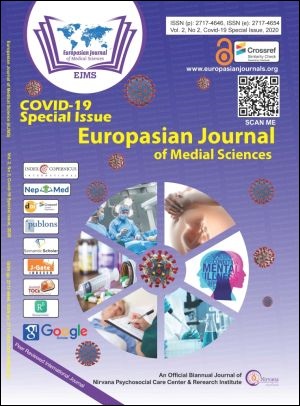Preventive Guidelines for Disinfection and Microbiological Processes During Handling of COVID-19 Samples
Keywords:
Coronavirus, SARS-CoV-2, Microbiology, Biosafety, DisinfectionAbstract
Since the first detection and emergence of SARS-CoV-2 in Wuhan, China in December 2019, it has become a worldwide health concern. Human to human airborne transmission and persistence of SARS-CoV-2 on inanimate surfaces or contaminated hands have been documented. Droplets transmission has been recognized as a major source of virus spread. Most of the samples received in the pathology laboratories were for the diagnosis of the corona virus disease-2019 (COVID-19). The highest concentration of SARS-CoV-2 has been observed in the respiratory specimens compared to the non-respiratory specimens as the virus is present in lower concentration in urine, blood, and stool. The guidelines in this article present the procedures for disinfection and microbiological processes that should minimize the risk of infection to the laboratory personnel. Surface disinfection with sodium hypochlorite (0.1%), ethanol (62%-71%), or hydrogen peroxide (0.5%) with an exposure time of 1 min is likely to be efficient against SARS-CoV-2. However, the ultraviolet light at 254 nm, glutaraldehyde, formalin, heat treatment of 65 ◦C or above, and acidic (pH <3) may be effective for inactivating SARS-CoV-2. The SARS-CoV-2 can remain infectious on the inanimate surfaces for up to 9 days so laboratory personnel should be aware of the need for following the biosafety protocols while processing the specimens.
Downloads
Downloads
Published
How to Cite
Issue
Section
License
Copyright (c) 2020 Muhammad Roman

This work is licensed under a Creative Commons Attribution 4.0 International License.
The author(s) retain the ownership of the copyrights for their work published in EJMS without any restrictions. Upon submission, the author(s) grants EJMS a license to publish, including to display, store, copy, and reuse the published content.
License to Publish
By submitting a manuscript to EJMS, the author(s) grant the journal a non-exclusive license to:
- Publish and distribute the content in all formats, media, and platforms (both existing and future), while identifying EJMS as the original publisher.
- Reproduce, display, and store the content in both print and online formats, including institutional and digital repositories.
- Translate, adapt, and summarize the work, including reprints, extracts, and abstracts.
- Develop derivative works based on the original content.
- Include the work in electronic databases and provide links to third-party materials.
Creative Commons Licensing
In addition to EJMS’s publishing rights, authors grant third parties the right to use, share, and distribute their work under the Creative Commons Attribution 4.0 (CC BY 4.0) International License. This allows unrestricted use of the content, provided proper attribution is given to the original author(s) and the journal.

